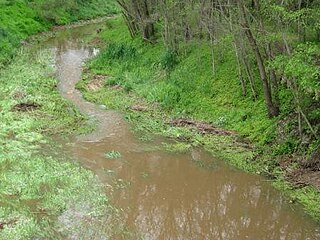
Wakefield Regional Council is a local government area in the Yorke and Mid North region of South Australia. The council seat is at Balaklava.

The District Council of Wakefield Plains was a local government area in South Australia from 1983 to 1997, seated at Balaklava.

The town of Balaklava is located in South Australia, 92 kilometres north of Adelaide in the Mid North region. It is on the south bank of the Wakefield River, 25 kilometres east of Port Wakefield.
Wooroora was an electoral district of the House of Assembly in the Australian colony of South Australia.

The Hundred of Inkerman is a cadastral unit of hundred located on the northern Adelaide Plains in South Australia and bounded on the north by the Wakefield River. It is one of the eight hundreds of the County of Gawler. It was named in 1856 by Governor Richard MacDonnell after the Crimean War Battle of Inkerman.

The Hundred of Balaklava is a cadastral unit of hundred located on the northern Adelaide Plains in South Australia immediately south of the Wakefield River. It is one of the eight hundreds of the County of Gawler. It was named in 1856 by Governor Dominick Daly after the Crimean War Battle of Balaklava. The township of Balaklava is at the extreme north east corner of the hundred.

Dalkey is a locality in the Mid North of South Australia. It was established as a private subdivision of section 171 in the Hundred of Dalkey on the main road from Adelaide to Balaklava. It is named for the Hundred of Dalkey which in turn was named after Dalkey in Ireland. The boundaries of the locality were defined in 2000 for the long-established name.

The Hundred of Stow is the cadastral unit of hundred on the northern Adelaide Plains. It is one of the 16 hundreds of the County of Stanley. It was named in 1867 by Governor Dominick Daly after Randolph Isham Stow (1828–1878), twice Attorney-General of South Australia. Parts of the localities of Mount Templeton, Stow, Whitwarta, Watchman and Balaklava are within the hundred.

The District Council of Snowtown was a local government area in South Australia from 1888 to 1987.

The Hundred of Hall is the cadastral unit of hundred on the northern Adelaide Plains centred on the town of Halbury. It is one of the 16 hundreds of the County of Stanley. It was named in 1860 after parliamentarian George Hall (1851-1867). The main localities in the hundred are Halbury and Hoyleton with parts of Balaklava, Stow, Watchman and Kybunga also within the hundred bounds.

The District Council of Blyth was a local government area in South Australia from 1872 to 1987 seated at Blyth in the Mid North.

The Hundred of Goyder is the cadastral unit of hundred on the northern Adelaide Plains centred on the locality of Goyder. It is one of the 16 hundreds of the County of Stanley. It was named in 1862 by Governor Dominick Daly after George Goyder, famed South Australian surveyor. In addition to the localities of Goyder and Beaufort, most of Nantawarra lies within the Hundred of Goyder. The portions of Port Wakefield and Bowmans north of the Wakefield River are also inside the hundred, and small parts of the localities of South Hummocks and Mount Templeton cross the western and eastern of boundaries of the hundred, respectively.

The District Council of Port Wakefield was a local government area seated at Port Wakefield in South Australia from 1878 to 1983.

The District Council of Balaklava was a local government area seated at Balaklava in South Australia from 1877 to 1983.

The District Council of Hindmarsh was a local government area in South Australia from 1853 to 1875, seated at the inner north west Adelaide suburb of Hindmarsh.

The City of Woodville was a local government area in South Australia from 1875 to 1993, seated at the inner north west Adelaide suburb of Woodville.

The Hundred of Alma is a cadastral unit of hundred located on the northern Adelaide Plains of South Australia spanning the township of Alma and the Alma Plains. The hundred was proclaimed in 1856 in the County of Gawler and named by Governor Richard Graves MacDonnell for the River Alma on the Crimean Peninsula, the location of the Battle of the Alma, the first Allied victory in the Crimean War. The hundred is bounded on the north by the Wakefield River and on the south by the Light River










